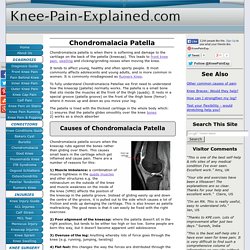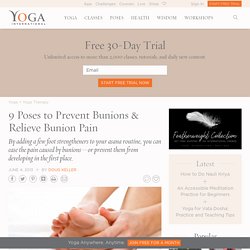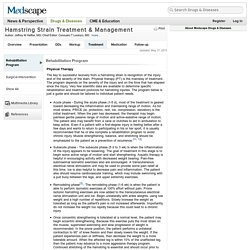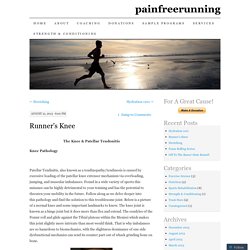

What to do when one glute won't fire. Quick Glute Activation Circuit. Knee Cap Exercises: Improve Patella Tracking. Knee cap exercises can be really helpful in reducing knee pain.
They strengthen the VMO muscles (Vastus Medialis Oblique) around the patella improving how the kneecap moves. The VMO muscles are part of the quadriceps muscles and are found on the inner side of the knee. Their job is to control the kneecap movement, known as patellar tracking. They hold the kneecap in the middle of the patellar groove so it glides smoothly during any leg movement. If the kneecap muscles are weak, the kneecap shifts slightly to the outer side of the knee. Why Do Knee Cap Exercises? The VMO muscles should be working the whole time when the knee moves, but if there is knee pain or there has been a kneecap injury such as a dislocation, they often switch off and stop working properly.
Here you will find some easy to perform yet effective knee cap exercises for the VMO muscles. Chondromalacia Patella: Symptoms, Diagnosis & Treatment. Chondromalacia patella is when there is softening and damage to the cartilage on the back of the patella (kneecap).

This leads to front knee pain, swelling and clicking/grinding noises when moving the knee. It tends to affect young, healthy and often sporty people. It most commonly affects adolescents and young adults, and is more common in women. It is commonly misdiagnosed as Runners Knee. To fully understand Chondromalacia Patellae we first need to understand how the kneecap (patella) normally works. Barefoot Biomechanics. Welcome to another post in the Barefoot Strong Blog!

Today’s post is a great example of why all health and wellness professionals (including those that are specialists) must always consider the greater picture and consider integrated movement systems. Although I am a Podiatrist and am presented with patients complaining of foot & ankle pain or dysfunction, I take great pride in approaching all my patients with a holistic and functional approach. Each patient I see is assessed for foot function as it relates to the entire body and integrated movements such as walking, squatting and landing. Below is is a summary and explanation for an often misdiagnosed cause of lateral foot pain in runners. Female Runner with Chronic Lateral Ankle Pain I was recently referred a patient with chronic lateral ankle pain which was not responding to current conservative treatment and physical therapy (which is always a signal that we need to delve deeper into the actual cause vs. symptoms).
Patient Examination. 9 Poses to Prevent Bunions & Relieve Bunion Pain. A bunion is an all-too-common foot problem that can easily develop into a painful deformity if left unchecked.

Medical science treats bunions as a progressive disorder and cites hereditary factors as the main culprit. But from a more holistic perspective, constrictive shoes, coupled with the fact that we rarely stretch, massage, or otherwise properly exercise our feet, are also contributing factors. The good news is that a few warm-ups and exercises for the feet, along with targeted yoga poses, can slow the progression of bunions caused by hereditary factors, and even halt the formation of bunions resulting from neglect and ill-fitting shoes. Even if you don’t have bunions, these exercises will reduce soreness and fatigue, and keep your feet healthy and strong. How Bunions Develop We'll never share your info.
Dorian Yates Stiff legged deadlift. Nordic hamstring. Hamstring Strain Treatment. About Medscape Drugs & Diseases Medscape's clinical reference is the most authoritative and accessible point-of-care medical reference for physicians and healthcare professionals, available online and via all major mobile devices.

All content is free. The clinical information represents the expertise and practical knowledge of top physicians and pharmacists from leading academic medical centers in the United States and worldwide. The topics provided are comprehensive and span more than 30 medical specialties, covering: Diseases and Conditions More than 6000 evidence-based and physician-reviewed disease and condition articles are organized to rapidly and comprehensively answer clinical questions and to provide in-depth information in support of diagnosis, treatment, and other clinical decision-making.
Procedures Anatomy More than 100 anatomy articles feature clinical images and diagrams of the human body's major systems and organs. Drug Monographs Drug Interaction Checker Formulary Information. Www.udel.edu/PT/PT Clinical Services/RehabGuidelines/HAMSTRING_EXERCISE_PROGRESSION.pdf. Painfreerunning. The Knee & Patellar Tendonitis Knee Pathology Patellar Tendinitis, also known as a tendinopathy/tendinosis is caused by excessive loading of the patellar knee extensor mechanism via overloading, jumping, and muscular imbalances.

Found in a wide variety of sports this nuisance can be highly detrimental to your training and has the potential to threaten your mobility in the future. Follow along as we delve deeper into this pathology and find the solution to this troublesome joint. Below is a picture of a normal knee and some important landmarks to know. How much is too much? Whether its overuse, too much too soon, or muscular imbalances the outcome is usually the same. Other probable causes of patallar tendinopathies include but are not limited to ankle mobility, Quadriceps dominance, poor patellar tracking, Plica syndrome, bursitis, hip weaknesses and much more. How to fix it and keep it away Patellar Tracking One exercise I found that works well with patellar tracking is leg extensions.